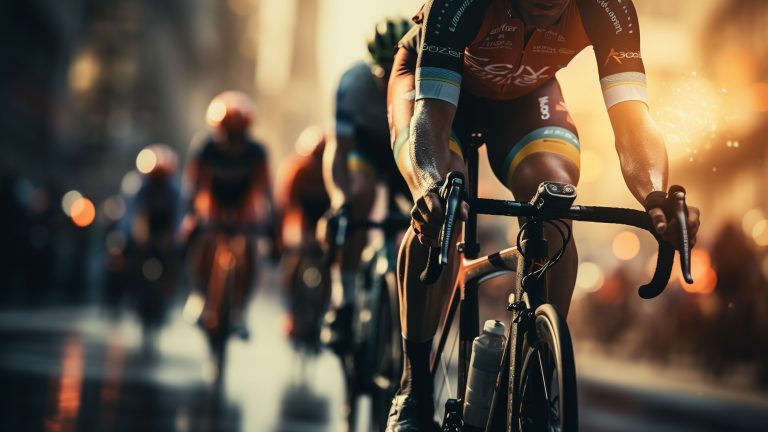
With gyms being temporarily shut and group sports both indoors and outdoors being cancelled, the solo sport is on the rise as people are taking to the streets either running, walking or cycling to keep on top of their fitness, but also just to take a break and escape the confinements of their houses.
The demand for athletic equipment and accessories has been increasing worldwide as early as March this year and as it continues to do so, the problem these sports-focused businesses are facing is keeping up with the demand.
The world hasn’t seen a boom like this – in particular within the bicycle industry since the 1970s. We saw the running boom of the 1970s from which emerged many varied designs of the ideal running shoe, and it was also the cycling boom within this decade that saw the likes of Cannondale, Trek and Specialized emerge from this period.
As cycling became mainstream, so too did bike theft which inspired the invention of the Kryptonite lock.
As the late 1960s crept in, so did the Summer of Love in Haight Ashbury, San Francisco where hippies wearing flowers in their hair voiced their demands for peace, free love and anti-war.
As the 70s rolled in, environmentalism became a strong focus within society despite its attention brought in 10 years earlier with the publication of Silent Spring by the biologist, Rachel Carson that focused then on the detrimental effects of pesticides in our environment.
Debates and topics were raised on how to best overcome environmental pollution, issuing in the Environmental Protection Agency by President Nixon. It was around this time that cycling took off as people got on board with reducing environmental pollution – offset by the automobile industry.
Cycling and environmentalism during this period went hand in hand and America was seeing the biggest surge within the bicycle industry in 154 years. At the height of the cycling boom, there was a reported 45 million bicycles sold and around 64 million American citizens were using bikes both for leisure and commuting, with most bikes being purchased by adults.
From 1970-1974, as bicycles became mainstream, America looked to changing city infrastructures to accommodate cyclists with over 250 bicycle-centred bills introduced in 42 states. The Arab-oil embargo also had an impact on the already booming bicycle industry as gas became both scarce and pricey for automobile owners.
Fast forward 50 years and countries around the world are all experiencing yet another bike boom for many different reasons and it looks like it is here to stay. COVID-19 that has crippled economies and has forced industries to adapt to the current situation in more inventive and adaptable ways.
Cycling-centric cities such as Copenhagen and Amsterdam, where 60% of the population commute by bike, might become the new normal for many other cities around the world as governments are starting to provide funding to increase bicycle lanes, barriers and subsidies for riders purchasing bikes for commuting purposes.
In the USA, bicycle sales, repairs and equipment have increased by up to 50% since the pandemic hit with a surge in commuter, leisure, and children’s bikes. These exploding numbers are similar in Australia and the UK. Some bicycle store owners have reported up to an astounding 600% increase.
What is both interesting and encouraging to see is around 42% of those cycling now are getting back on their bikes after a 15-20 year hiatus and are introducing the activity to their children.
Within the United States, on google maps, pandemic road closures are being named ‘slow streets’, and are marked with dotted lines indicate roads that are open to cyclists, pedestrians and authorized vehicles only. In some European cities, cycling lanes are being extended from anywhere between 50-650km.
Cycling has become more accessible to those who have always thought about it or did not have the right incentive to start the hobby up again – until now. With fewer cars on the road and social distancing measures in place where public transportation can only be filled 30-40%, bicycles seem to be the most logical form of mobility.
As the pandemic hit, the British were fearful of taking public transport and some 20,000 bikes were reported either sold or reserved, according to The Association of Cycle Traders in Britain. Factories in Asia are backlogged by months and are trying to meet the worldwide demands after the industry had to be shut down for two months at the beginning of the pandemic.
The cycling boom of the 2020s, like that of the 1970s, will change the way we commute, exercise, and spend time with our families. We hope that the temporary cycle lanes of now will become a permanent change for cities infrastructures, encouraging fitness, cleaner air, and a safer cycling environment for the future.
You may also enjoy reading the following related articles:
1970’s cycling boom
https://www.theguardian.com/cities/2017/jun/16/pedal-ins-patchouli-bikeology-americas-forgotten-1970s-cycle-boom
https://www.curbed.com/2017/6/28/15886810/bike-transportation-cycling-urban-design-bike-boom
Image Sources
Flo Karr, 🇨🇭 Claudio Schwarz | @purzlbaum, Helio Dilolwa and Coen van de Broek on Unsplash
$6 USD flat rate shipping anywhere in the world.

Order your G8's with complete confidence. All G8 Performance insoles and accessories purchased via our website come with a full 90 Day Warranty.
We insist on your complete satisfaction with all our G8 Performance products, service and support or your money back.